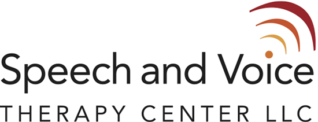What is a Voice Disorder?
A voice disorder may be characterized by hoarseness, vocal fatigue, raspiness, periodic loss of voice, or inappropriate pitch or loudness. Voice problems, although very common, are not normal. (Over 1 million children suffer from a voice disorder nationwide. The incidence of voice disorders in school-aged children ranges from 6% to 23%.*)Respiratory problems may occur due to abnormal closure of the vocal cords called Paradoxical Vocal Fold Motion (PVFM) which can often be successfully treated with voice therapy.
What causes voice problems?
Most voice disorders result from straining the voice. Examples of straining may include: frequent yelling, shouting, speaking too low/high, too soft/loud, too much, using inefficient breath support, speaking often in background noise, singing incorrectly, and chronic throat clearing.
Why are Voice Disorders serious in children?
- Can cause problems in acting, singing or communicating during sports.
- May interfere with class presentations or socialization with peers.
- May impact self-image and self-esteem.
- May lead to nodules (similar to calluses) on the vocal cords. Nodules are among the most common causes of voice disorders in children and account for approximately 40% to 80% of chronic hoarseness in children.**
Warning Signs That Your Child Might Have a Voice Disorder:
- Hoarseness, raspiness, or strain on a daily, weekly, or otherwise frequent basis
- Hoarseness/raspiness “has always been there” – parent feels it may be the child’s “natural” voice
- Hoarseness or intermittent voice loss during or after sports, cheering, shouting, singing, camp
- Others comment that child’s voice makes him/her sound older
- Voice sounds deeper (lower) than most children of similar age
- Straining to reach the higher notes when singing
- “Laryngitis” lingering well after a cold or upper respiratory infection has passed
How can voice problems be helped?
Voice problems are usually treated successfully. Voice therapy is frequently the first treatment choice for voice problems in children. Voice problems and vocal nodules may become smaller or even eliminated by voice therapy alone. Sometimes medications are also prescribed by a physician to treat allergies, reflux, or respiratory conditions that may contribute to the voice problem.
What are some of the methods used in voice therapy?
- Eliminating strain on the vocal cords by using resonant voice technique
- Identifying and using alternative habits to improper vocal habits
- Using appropriate breathing patterns for speech, vocal projection, and sports
- Manipulation of the muscles on the outside of the voice box (larynx)
- Education regarding how the voice works and foods/drinks that can help or hurt the voice
- Speaking at an appropriate speed
- Changing loudness
*Source: Sarah D. Melton, M.A., CCC-SLP and Shannon M. Theis, Ph.D., CCC-SLP, University of Wisconsin-Madison Medical School, 2008 **Source: Theis, S. M. (2010, November 23). Pediatric Voice Disorders: Evaluation and Treatment. The ASHA Leader.
